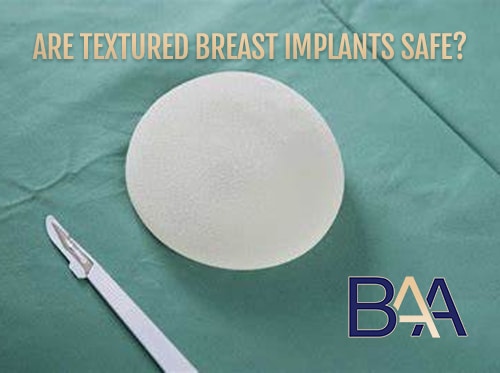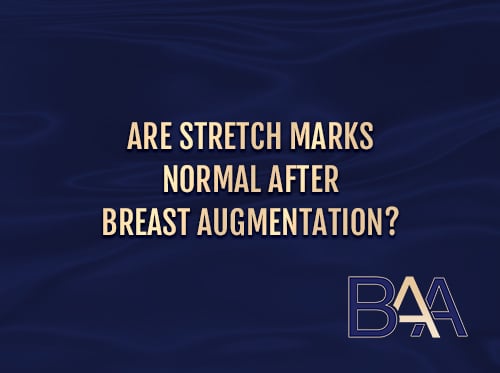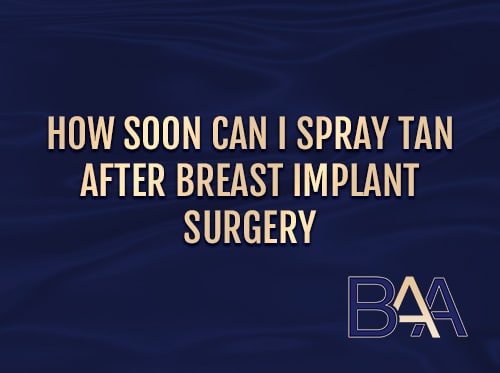Keller Funnel
Breast augmentation is a popular cosmetic surgery procedure worldwide. The medical industry continually develops tools and techniques to aid in different stages, including insertion, to improve the procedure. The Keller Funnel is one of these tools. The invention has revolutionised the breast augmentation surgery process and improving surgical outcomes. Let’s find out more.
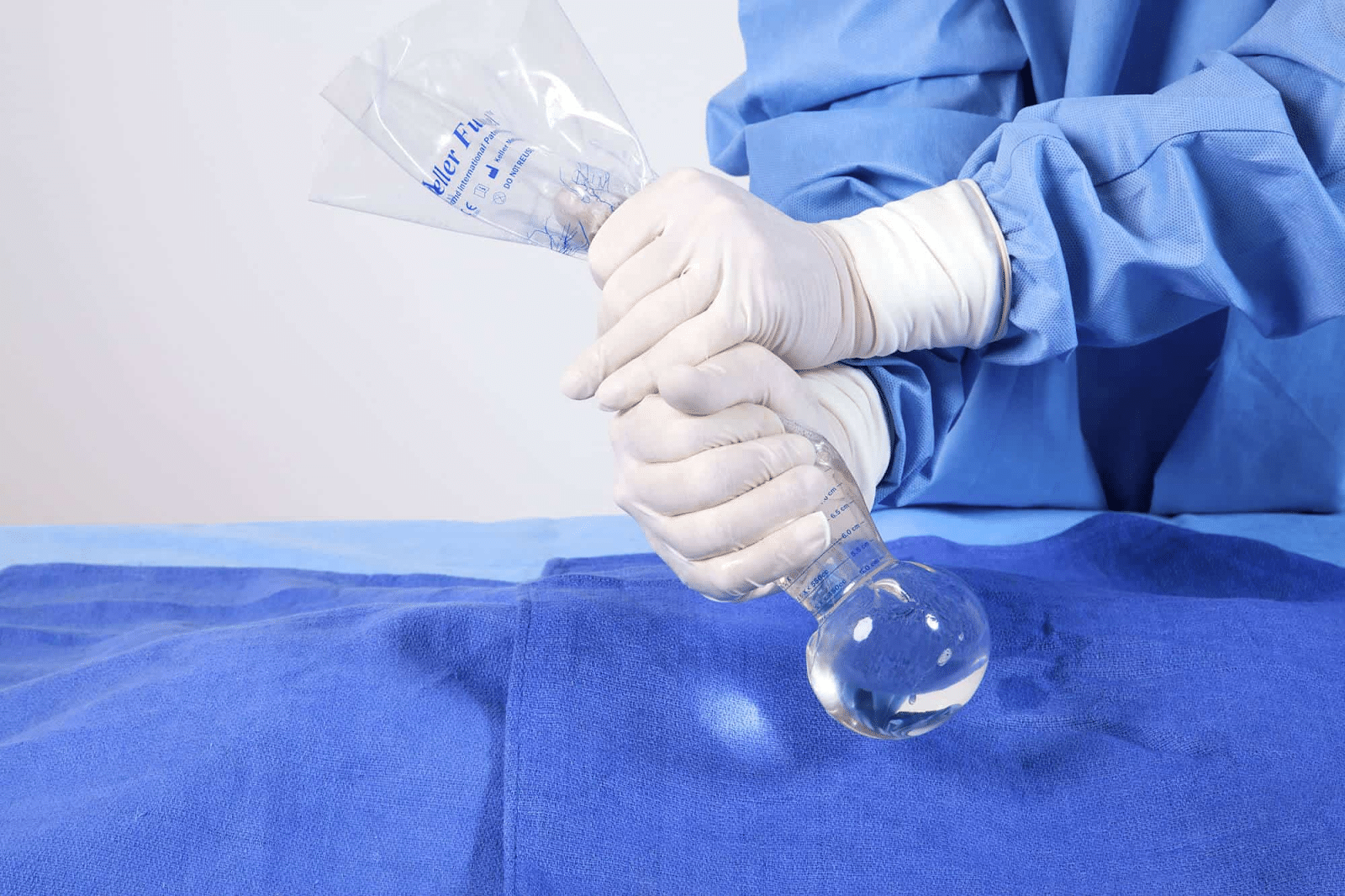
Keller funnel
What is a Keller Funnel?
A Keller Funnel, named after Kevin Keller, the inventor, is a cone-shaped surgical tool designed to allow smooth and seamless insertion of breast implants into the breast pocket. The Keller Funnel is simple, lubricated, sterile, and designed using low-friction material to increase functionality.
The tool aids the insertion of silicone breast implants requiring more expertise, unlike saline breast implants. The Keller Funnel is made from polymer vinyl material, consisting of a self-lubricated inside coating and a funnel shape.
The interior becomes very slippery upon moistening, allowing the silicone implant to pass through. In addition, Keller Funnel reduces contact between the breast implant and the breast tissue. This means there is less chance of bacterial contamination, which can lead to capsular contracture and infections.
The conventional approach to breast implant insertion entails manually handling the implant. The surgeon employs a two-handed technique, with one hand stabilizing the implant while gradually and carefully pushing it through a small incision using their fingers. This method, therefore, presents several difficulties:
- It necessitates a larger incision.
- The implant comes into contact with the skin, which harbours a significant amount of bacteria. Even with surgical preparation, the skin retains bacteria, particularly in areas beyond the reach of the preparation process, such as hair follicles and sweat glands.
- There is a risk of damaging the implant due to the substantial force required to insert it into the surrounding tissues.
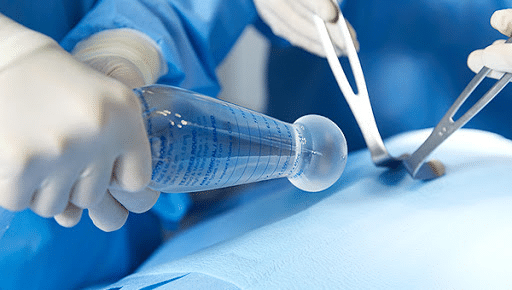
Inserting Breast implant using Keller funnel
Why is Keller Funnel Used for Silicone Breast Implants and Not Saline
Compared to saline implants, the use of Keller Funnel offers significant advantages when it comes to the insertion of silicone breast implants. This is because silicone implants are pre-filled with silicone gel. See our article Comparison Between Cohesive Gel and Saline Breast Implant. In addition, due to their pre-filled nature, silicone implants are bulkier and require a large incision during insertion. Because of this, the Keller Funnel has significant benefits for these implants.
Some benefits of using the Keller Funnel for silicone Implants include the following;
- Smaller incision.
- Quicker Insertion. The Keller Funnel design allows for a smooth transfer of the silicone implant into the breast pocket, saving valuable time during surgery.
- Less chance of bacterial contamination. Keller Funnel is a protective barrier between the implant and the skin. This reduces the risk of bacterial contamination during the insertion, even in areas where standard surgical preparation may not reach, such as hair follicles and sweat glands.
- Reduced risk of implant damage. Due to their bulky nature, silicone implants require more force to be inserted into the surrounding tissues. The Keller Funnel minimises this risk by providing a controlled and gentle technique for implant insertion, reducing the chances of damage to the implant.
It’s important to note that using the Keller funnel comes with an additional cost, which adds to the overall expense of the procedure. However, these benefits are specific to silicone implants.
Saline implants are silicone shell that is filled with saline. Therefore they do not require as much force or a large incision for insertion. In addition, once placed in the pocket, saline implants are inflated, eliminating the need for a Keller Funnel.
How Keller Funnel Works in Breast Augmentation
A specialist surgeon starts by making an incision on the patient’s body. There are several possible incisions to insert a silicone breast implant.
- Under the Breast: This approach involves making an incision in the natural crease where the breast meets the chest wall. It tends to result in a well-concealed scar which remains hidden in the natural fold under the breast.
- Around the Areola (Peri-areolar): This involves making an incision around the edge of the areola, the pigmented areas surrounding the nipple.
- In the axilla: This is commonly known as the transaxillary incision and involves making a small incision in the natural crease of the armpit. The surgeon later creates a tunnel to the breast tissue for implant placement.
After the incision, the surgeon inserts the narrow, soft end of the Keller Funnel into the incision. The nurse then inserts the implant into the Keller Funnel through an opening at the top. The implant is transferred directly from its packaging without any direct contact. The next step is slowly squeezing the implant through the funnel and into the breast pocket.
Below are detailed steps followed when inserting a breast implant using the Keller Funnel:
Trimming (Step 1)
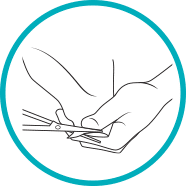
As aforementioned, the surgeon uses a sterile blade or scissors to cut the Keller Funnel’s distal end by following the guidelines on the funnel. There are different trim locations as per the Keller Funnel trim guidelines. The use of a sterile blade ensures the Keller Funnel doesn’t get contaminated when trimming.
The surgeon must trim the funnel to the right size according to the implant’s size and shape. This ensures the implant exits the Keller Funnel without getting damaged. In addition, the size of the incision on the patient is dictated by the diameter of the distal end of the Keller Funnel.
Hydrating (Step 2)
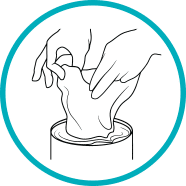
The next step is immersing the Keller Funnel in a sterile solution. The process makes the funnel’s inner surface slippery, ensuring easier passage of the implant. It needs to remain moist to prevent the inner hydrophilic lining from drying.
Loading (Step 3)
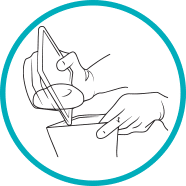
After hydrating the funnel, the next process is loading the silicone implant into the funnel. The process involves using a no-touch technique to prevent implant contamination. The no-touch technique involves inserting the implant into the Keller Funnel directly from its original packaging.
Propelling (Step 4)

The last step in the process is inserting the Keller Funnel through the incision. The surgeon slowly squeezes the implant through the funnel, inserting the implant into the breast pocket. This is achieved with minimal trauma to the patient, breast tissue, and the implant since minimal force is used.
Types of Incisions Made When Using a Keller Funnel?
When it comes to incisions for breast implant insertion, there are several options available. The most commonly used incision is made under the breast. This is because it provides optimal access for the surgeon to create the breast pocket where the implant will be placed.
Other available incisions for a silicone breast implant are axillary and around the areola. These alternatives offer their advantages. Inserting a silicone implant without Keller Funnel usually requires at least a 5 cm incision. However, larger implant sizes may necessitate a larger incision.
On the other hand, when a Keller Funnel is used, the incision size can be reduced to around 3 cm. The specific size of the incision will still depend on the size of the breast implant being inserted.
Conventional insertion methods using remote incisions were associated with high post-surgical complications. The axillary incision is made at the armpit and allows the insertion of cohesive gel implants. Previously, only saline-filled implants could be inserted through the axillary incision.
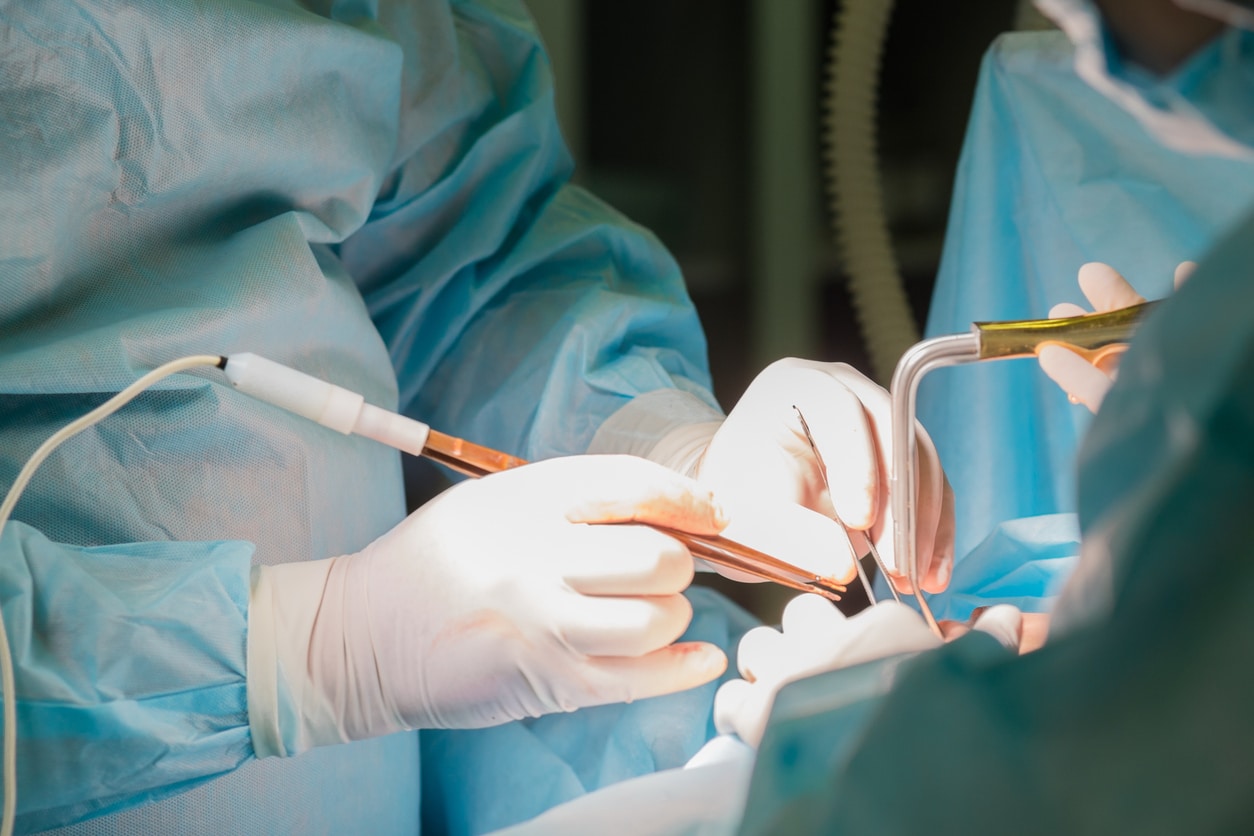
Does Keller Funnel Reduce the Rate of Capsular Contracture?
Capsular contracture is a surgical complication that can occur years after breast implant surgery.
Scar tissue naturally forms around all implants, creating a pocket where the implant resides. Ideally, this pocket remains soft and pliable. However, in some cases, the scar tissue gradually thickens and contracts over time. As a result, the implant pocket hardens and may cause discomfort or pain.
The hardening is painful and causes discomfort to the patient. Sometimes, capsular contracture causes the breast shape to distort, affecting body symmetry. Treatment of the complication involves removing the hardened capsule or revising the surgery. Capsular contracture is painful if left untreated.
The leading causes of capsular contracture include contamination of the silicone breast implant surface or the breast pocket, implant texture, rupture, and the type of incision.
It is important to note that no one knows why capsular contracture happens. One theory, however, suggests that bacterial contamination of breast implants could play a role. The theory states that the presence of bacteria on or around the implant may trigger an immune response, leading to the formation of subsequent contracture.
Researchers have developed different tools and techniques to reduce the rate of capsular contracture. The developments that reduce capsular contracture include antimicrobial implant baths and breast pocket irrigation. However, the development of the Keller Funnel has proved essential. The tool offers an alternative, no-touch technique to hand placement procedures.
The Keller Funnel uses the no-touch technique to reduce the risk of contamination through contact with external elements. Studies show that the rate of capsular contracture in women who get breast implants using the Keller Funnel is less compared to women who have breast implants inserted without the tool. This suggests that the Keller Funnel reduces the rate of capsular contracture.
Does Keller Funnel Reduce Bacterial Contamination During Insertion?
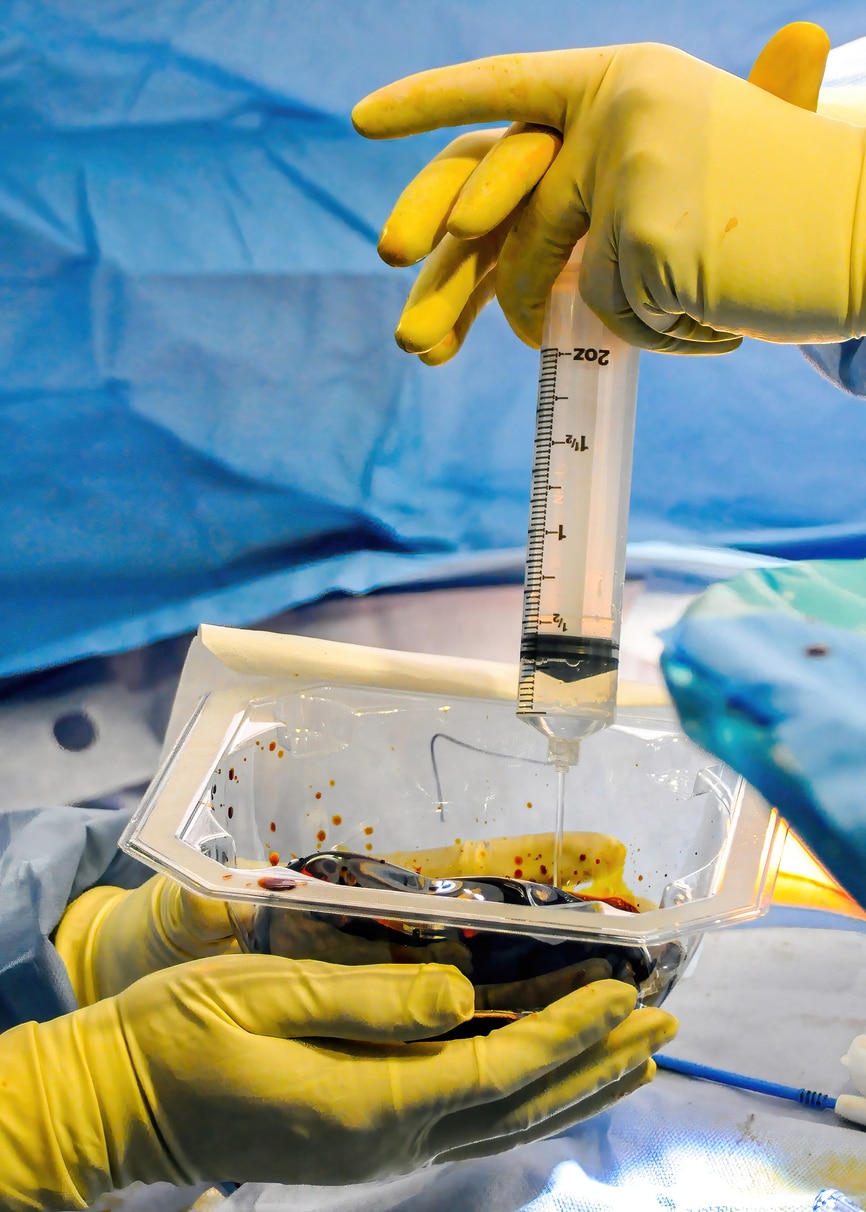
Different reasons may cause bacterial contamination during the insertion of the breast implant. These include contact with the patient’s skin or breast tissue, the surgeon’s gloves, and other external elements. Bacterial contamination can occur in both the implant and the breast pocket. The patient is exposed to illnesses such as Breast Implant-Associated- Anaplastic Large Cell Lymphoma (BIA-ALCL) when either becomes contaminated.
Less or no contamination ensures that the patient experiences fewer complications in the future, reducing the risk of a revision surgery to remove or replace the implant. To reduce the contamination, medical researchers developed the no touch technique. Other no-touch techniques developed, rather than Keller Funnel, include;
- Reversed-glove sleeves
- Double-implant loading
- Infusion container
- Plastic sleeves
- Packaged implant-cover
The Keller Funnel ensures no touch between the implant, breast pocket, or outer material. Research shows that Keller Funnel’s advanced no touch technique reduces contamination during implant placement, reducing post-surgery complications. This makes the tool better for both breast augmentation and reconstructive surgery due to breast cancer.
Does Keller Funnel Reduce the Risk of BIA-ALCL?
BIA-ALCL (Breast Implant-Associated Anaplastic Large Cell Lymphoma) is a cancer of the immune system affecting the breast tissue. This type of cancer occurs within the breast capsule surrounding the implant. BIA-ALCL is associated with breast implants, mainly textured breast implants. Theories developed to explain cancer development, mainly in patients with textured breast implants, suggest that the textured shell provides a surface for bacterial growth. Treatment of BIA-ALCL especially involves the removal of the infected capsule and the implant.
Despite the Keller Funnel’s primary purpose being reducing contamination and implant placement, no evidence suggests that it reduces the risk of BIA-ALCL. Medical research is ongoing to determine the causes, additional effects, and prevention measures of BIA-ALCL.
However, TGA has banned macro-textured breast implants in Australia to curb the illness. Nevertheless, micro-textured and smooth gel implants are still widely used in Australia. Patients are advised to consult a FRACS surgeon for additional guidance on the disease.
Advantages of Using a Keller Funnel
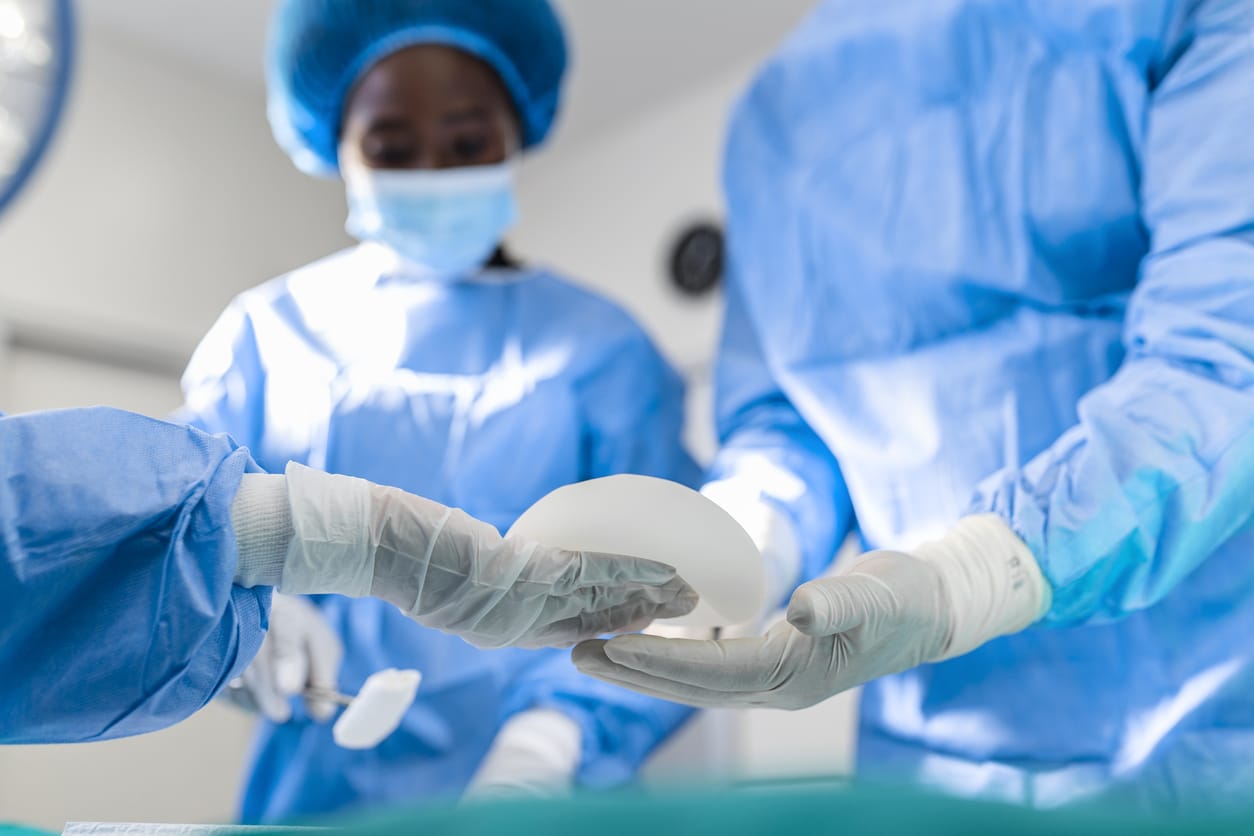
The Keller Funnel method is among the ground-breaking procedures in breast augmentation with numerous benefits. Here is what you get:
- Lower risk of capsular contracture
- Quicker surgery procedure
- Reduced healing time
- Fewer complications
- Reduced surgical trauma on the patient
- Lower risk of implant damage
- Increased incision options
- Reduced incision size
Lower Risk of Capsular Contracture
Studies show that using a Keller Funnel for breast augmentation significantly reduces the risk of capsular contracture. This is due to the enhanced no-touch technique, which ensures no breast implant contamination during implant placement. Contamination during breast augmentation surgery is often because of contact between the implant and the skin.
Quicker Surgery Procedure
The slippery inner coating of the Keller Funnel offers a smooth passage of the implant into the breast pocket. The surgeon softly squeezes the implant through the funnel. The surgeon must manually place and position the implant into the breast pocket when the procedure does not involve the funnel. Conventional breast augmentation procedures are time-consuming and require expertise, especially with remote incisions.
The time taken to insert an implant using Keller Funnel is quicker than traditional methods.
Reduced Healing Time
The use of the Keller Funnel is associated with quicker healing since it causes less trauma to the breast tissue. In addition, only a tiny incision is made on the patients, causing less scarring. These factors make healing easier compared to the conventional method of implant insertion. Reduced healing time, in turn, reduces post-operation pain.
Fewer Complications
The wrong implant placement during breast augmentation surgery may lead to complications like implant rupture, misposition, unevenness, and more. The complication risk is higher when the surgeon manually inserts the implant than when using the Keller Funnel. Inserting the implants using the standard method requires higher precision and expertise.
Sometimes, the incision is made far from the breast to reduce scarring. However, inserting the implant using standard procedures becomes complicated, leading to a high risk of wrong placement. During the process, the implant may rupture or get mispositioned, leading to further complications, often resulting in revision surgery and implant removal, among other complications.
The Keller Funnel method reduces these risks by ensuring the accurate and smooth placement of the implant into the chest muscle. This is regardless of the incision location.
Less Surgical Trauma on the Patient
The conventional implant insertion method involves pushing the breast implant through the incision using the fingers. The continuous push of the implant may cause trauma to the patient by stretching and damaging the incision edges and hence the breast tissue. However, the Keller Funnel method prevents all of this. The surgeon slowly squeezes the implant through the funnel into the breast pocket without causing trauma to the incision.
Lower Risk of Implant Damage
While inserting the breast implant using the conventional technique, the surgeon might damage the implant by continuous pushing. Any trauma caused to the implant’s shell may cause a rupture once the implant is inside the body.
On the other hand, the Keller Funnel reduces the force needed to push the implant into the breast pocket. It also minimises the stress on the implant, lowering the risk of damaging it. Keller Funnel reduces the force applied to the breast implant substantially compared to conventional breast augmentation surgery techniques.
Increased Incision Options
There are limited incision options when the surgeon uses the conventional breast implant surgery procedures than when using the Keller Funnel. In standard procedures, the incisions must be near the breast to ensure ideal implant positioning and reduce the risk of malposition. Therefore, the surgeon is limited to using remote incisions to only saline breast implants.
However, the Keller Funnel offers the patient a range of incision options. The funnel’s design allows the implant to move smoothly through and into the breast pocket despite the distance. Therefore, the patient can opt for the remote incision and silicone breast implants to achieve better results. Combining small incisions and silicone gel implants can be challenging with standard procedures.
Reduced Incision Size
The Keller Funnel allows the plastic surgeon to make a smaller incision to place the implant. The tool is made from elastic material with a slippery inner coating that allows the implant to move lightly into the breast pocket. The end of the Keller Funnel is narrow, requiring a small incision for insertion.
The incision size can be as small as 1 or 2 inches. Large breast implants can pass through using the Keller Funnel despite small incisions. The incision would be twice the size when using the standard placement methods.
Techniques That Can be Combined with the Keller Funnel
There are few techniques that a surgeon can combine with the Keller Funnel for enhanced results. These include;
Dual-Plane Technique
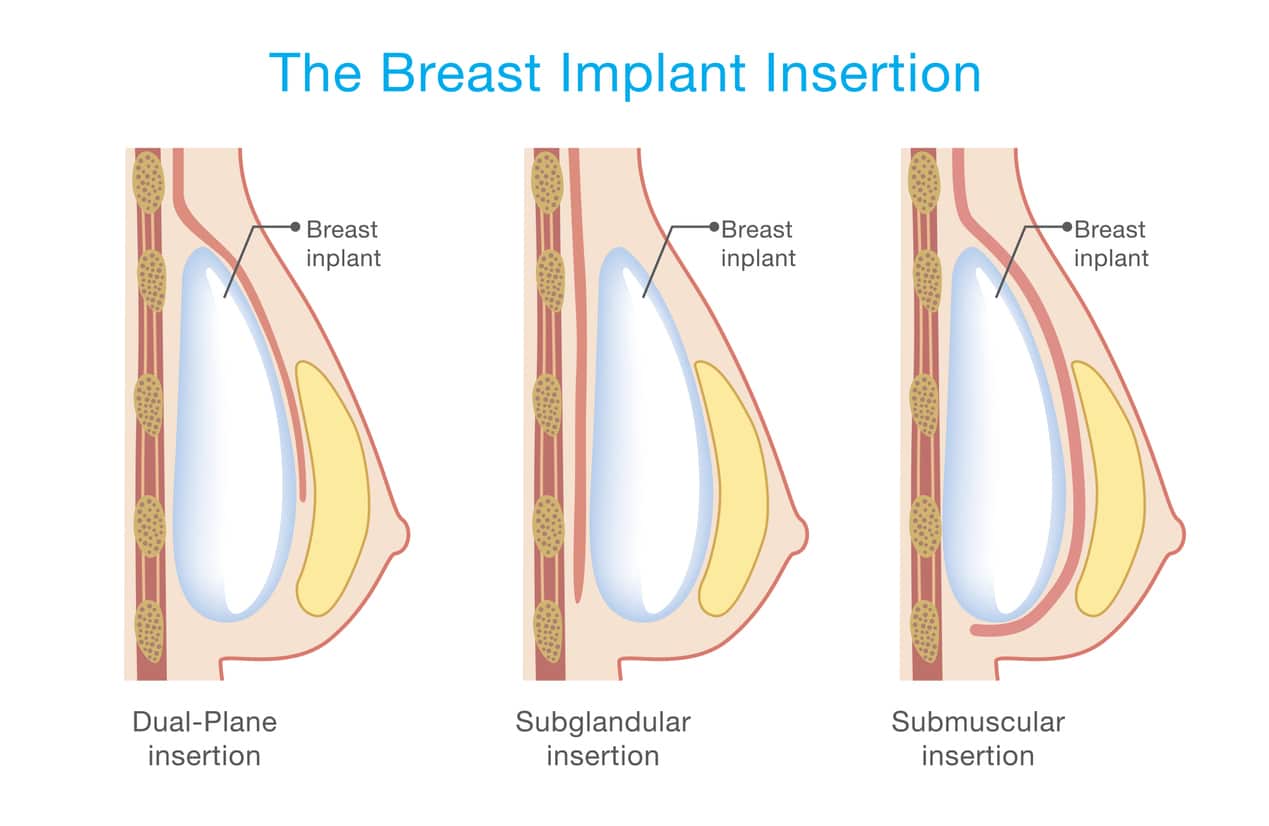
This involves placing the implant partially under the breast glands. The implant’s upper part is placed beneath the pectoral muscle, while the bottom part is above the pectoral muscle but beneath the breast tissue. Therefore, the implant is neither below nor above the pectoral muscle. The procedure provides a more natural feel and look.
Nipple/Areola Complex Reconstruction
The nipple-areola complex is used for reconstructive breast surgery after mastectomy. The procedure involves the reconstruction of the nipple and areola and may involve breast implants. Specialist surgeons can use the Keller Funnel to ensure precise implant insertion in relation to the areola and nipple location.
Tuberous Breast Correction
This technique is used to treat tuberous breasts. The treatment mainly involves breast augmentation using implants. The Keller Funnel can be very helpful in the procedure, providing the desired results.
Mastopexy (Breast Lift)
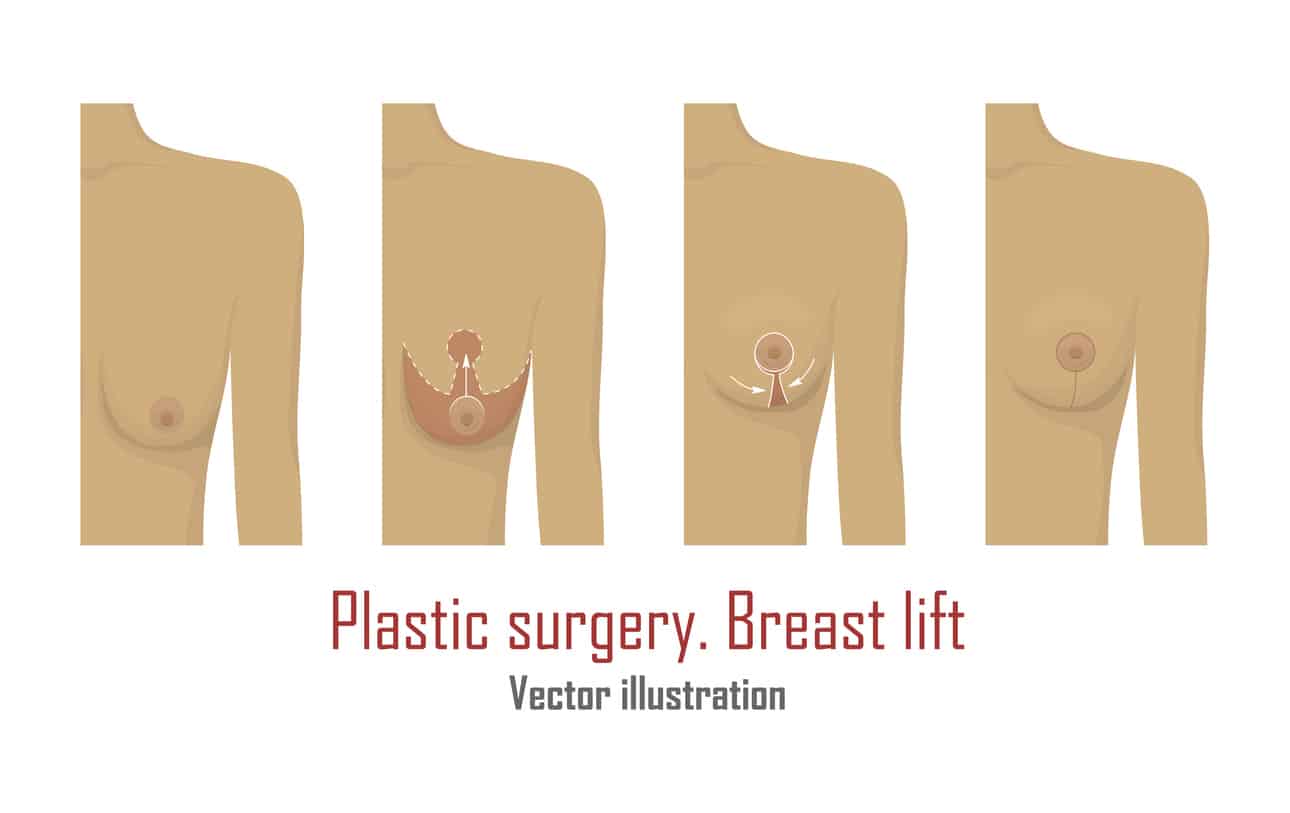
Mastopexy procedures can be combined with the Keller Funnel to assist the implant insertion. Mastopexy procedures make the breast look fuller. This will minimise breast and implant shell trauma and the incision size.
Capsulectomy and Capsulotomy
Capsulotomy is a procedure to remove the hardened capsule in patients with capsular contracture. The implant can be removed, replaced, or re-inserted during the process. Capsulectomy involves removing the entire capsule together with the implant. The procedure is applied in cases of severe capsular contracture, and Keller Funnel can be helpful in both cases.
Comparing the Keller Funnel and Conventional Breast Augmentation Methods
The Keller Funnel and conventional breast augmentation methods differ in their insertion approach. Below are some key differences:
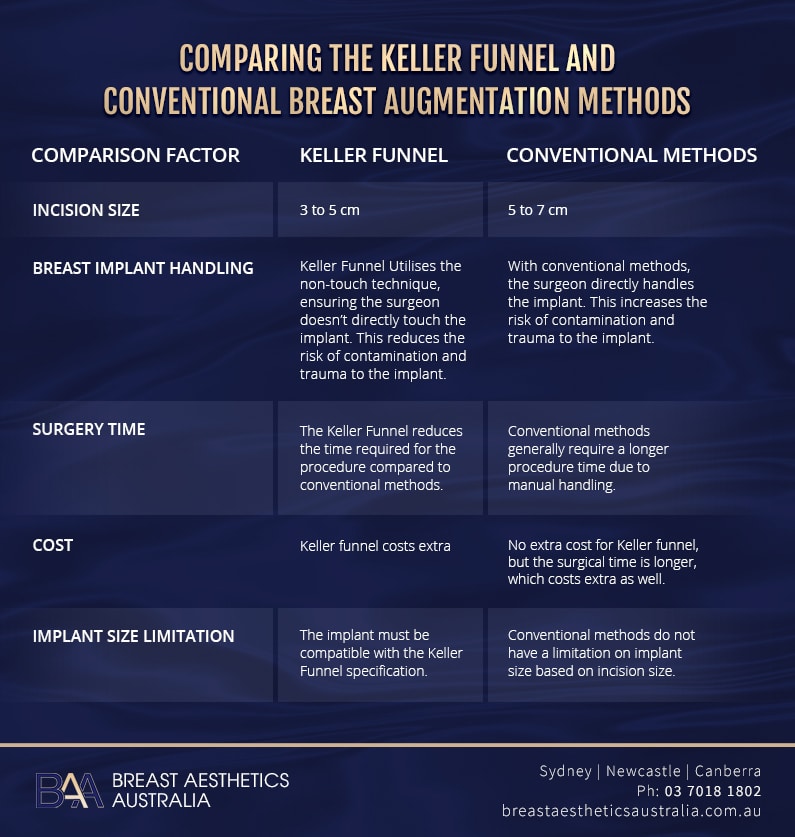
Keller Funnel and Conventional Breast Augmentation Method
What is the Cost of the Keller Funnel?
The Keller Funnel typically costs approximately $130. In the case of cosmetic breast augmentation, if you opt for a private hospital, you will be responsible for covering the cost. However, if you are undergoing a replacement of smooth implants due to complications, the hospital will charge the health fund for the Keller Funnel.
It is worth noting that only one size of Keller Funnel is available, designed to be a universal fit rather than offering several different sizes.
FAQs
Below are some of the frequently asked questions about the Keller Funnel.
Can You Reuse the Keller Funnel?
The funnel is a single-use item. Therefore, it must be disposed of after use on one patient. Reuse or re-sterilisation of the funnel is not allowed to ensure its efficiency and prevent infection or contamination.
Is the Keller Funnel Compatible with all Implants?
The funnel can be used with most of the available breast implants. These include different gel breast implant sizes and shapes, including textured round, smooth round, and shaped implants. Saline breast implants are not compatible with the funnel.
What Happens if the Implant Fails to Move Easily Inside the Device?
The implant may fail to move smoothly through the Keller Funnel if it’s not well hydrated. To ensure the implant’s smooth movement, the surgeon should properly hydrate the funnel and insert the implant as soon as possible to prevent the funnel from drying.
Are there Instructions for the Usage of the Funnel?
Directions for usage showing the trim locations are printed on the funnel. However, the Keller Funnel’s official website provides proper instructions in different languages. The materials include a surgeon brochure, a patient brochure, and instructional videos. The material is available for viewing and download.
What’s the No-Touch Technique?
The no-touch technique prevents the implant from contacting foreign material like the skin, breast tissue, or the surgeon’s gloves. The technique ensures there’s no contamination on the implant or the patient.
Bottom Line
The Keller Funnel is a useful method for non-touch breast augmentation and reconstruction surgery. It reduces surgical time, subsequent capsular contracture rate, and incision length and allows for less-straining insertion. Ideally, the Keller funnel has revolutionised primary breast augmentation procedures. It’s unique design and innovative approach have significantly improved the surgical process and patient and surgeon outcomes.
It, however, comes with a few drawbacks, like cost. The widespread adoption of the Keller Funnel has undoubtedly elevated the standards of care in implant surgery, reaffirming its position as a valuable and indispensable tool in the hands of a specialist surgeon like Dr Bernard Beldholm.
References
- Morkuzu, S., Ozdemir, M., Leach, G. A., Kanapathy, M., Mosahebi, A., & Reid, C. M. (2022c). Keller Funnel Efficacy in “No Touch” Breast Augmentation and Reconstruction: A Systematic Review. Plastic and Reconstructive Surgery. Global Open, 10(11), e4676.
- Montemurro, P., Fischer, S., Schyllander, S., Mallucci, P., & Hedén, P. (2019b). Implant Insertion Time and Incision Length in Breast Augmentation Surgery with the Keller Funnel: Results from a Comparative Study. Aesthetic Plastic Surgery, 43(4), 881–889.
- Newman, A. M., & Davison, S. P. (2018). Effect of Keller Funnel on the Rate of Capsular Contracture in Periareolar Breast Augmentation. Plastic and Reconstructive Surgery. Global Open, 6(6), e1834.
- Moyer, H. R., Ghazi, B., Saunders, N., & Losken, A. (2012). Contamination in Smooth Gel Breast Implant Placement: Testing a Funnel Versus Digital Insertion Technique in a Cadaver Model. Aesthetic Surgery Journal, 32(2), 194–199.
- Nimboriboonporn, A., & Chuthapisith, S. (2014). Nipple-areola complex reconstruction. PubMed.
- Bachour, Y., Poort, L., Verweij, S. P., Van Selms, G., Winters, H. a. H., Ritt, M. J., Niessen, F., & Budding, A. E. (2019). PCR Characterization of Microbiota on Contracted and Non-Contracted Breast Capsules. Aesthetic Plastic Surgery, 43(4), 918–926.
- Bartsich, S., Ascherman, J. A., Whittier, S., Yao, C. A., & Rohde, C. H. (2011). The Breast: A Clean-Contaminated Surgical Site. Aesthetic Surgery Journal, 31(7), 802–806.
- Tamboto, H. J. D., Vickery, K., & Deva, A. K. (2010). Subclinical (Biofilm) Infection Causes Capsular Contracture in a Porcine Model following Augmentation Mammaplasty. Plastic and Reconstructive Surgery, 126(3), 835–842.
- Keller, K. L., & Preissman, H. (2012). How the Keller Funnel Got its Start. The American Journal of Cosmetic Surgery, 29(4), 283–285.
- Molinar, V. E., Chopra, K., & Gryskiewicz, J. M. (2020). A Simple Alternative: A Minimal-Touch Technique for Placing Breast Implants. Aesthetic Surgery Journal, 2(2).
- Newman, A. M., & Davison, S. P. (2018c). Effect of Keller Funnel on the Rate of Capsular Contracture in Periareolar Breast Augmentation. Plastic and Reconstructive Surgery. Global Open, 6(6), e1834.
